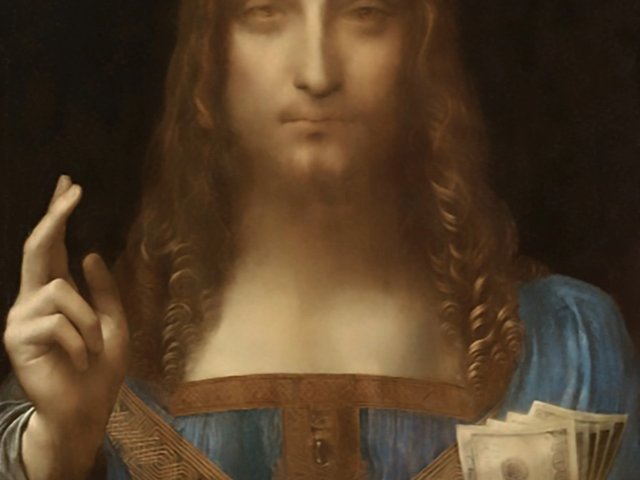The world’s most expensive painting is due to be transformed into an NFT (non-fungible token). Salvator Mundi, which has been attributed to Leonardo da Vinci, sold for $450.3m with fees at Christie’s New York, the highest price ever paid at auction. The controversial painting, which shows Christ holding a crystal orb, will be minted by ElmonX, a platform for digital assets, in collaboration with the international image licensing company Bridgeman Images. The terms of the sale, launching 12 August, are due to be announced.
Previous NFTs produced under the partnership include Leonardo da Vinci’s Mona Lisa (1503), Van Gogh’s Starry Night (1889), Auguste Rodin’s The Thinker (1904) and Claude Monet’s Nymphéas 1907. Mona Lisa was sold in 330 editions at a cost of £150.00 according to the ElmonX website. The platform also sold an "artist proof" version which bundled an NFT of the painting with a print for £900.00 in an edition of 10. Last week, an ElmonX artist proof Mona Lisa was resold on the NFT marketplace OpenSea for 3.7 ETH ($6,764).
In a statement, Bridgeman Images said “[as] the world's leading specialists in licensing fine art, cultural, and historical media for reproduction, [we] are delighted to collaborate with ElmonX, experts at the forefront of NFT art creation.” This relationship offers a “unique and exclusive opportunity to create high-quality NFTs based on Bridgeman Images' vast collection”.
A spokesman for Bridgeman Images tells The Art Newspaper that the financial terms of the deal remain confidential. “But we licence the images to ElmonX in much the same way that we would for any commercial project. We licence high-quality images and videos to advertisers, filmmakers, publishers and designers across all industries,” he adds.
The market for NFTs is bumpy though. Digital artist Beeple cemented his place in the cultural consciousness when his NFT Everydays—The First 5000 Days (2021), sold for $69.3m at Christie’s in 2021. In the second half of last year however, cryptocurrency crashed with the volume of global NFT sales dropping 83% in 2022 according to the NFT sector tracker NonFungible.
From an ongoing attribution debate to a patchwork provenance and multiple sales, the art world saga par excellence that is the $450m Salvator Mundi has a long and chequered history. Last year, we charted every major development on the painting in the past 500 years.
The work was offered at Christie’s New York in November 2017 "in excess of $100m", the highest-ever estimate for an Old Master painting; it was guaranteed by a third party, thought to be the Taiwanese businessman Pierre Chen. Following a two-person bidding war, it sold for $400m ($450.3m with fees) to a phone bidder on behalf of the new Saudi crown prince Mohammed bin Salman (MBS) whose identity was unknown to the public at the time. The whereabouts of the painting remain unknown.






